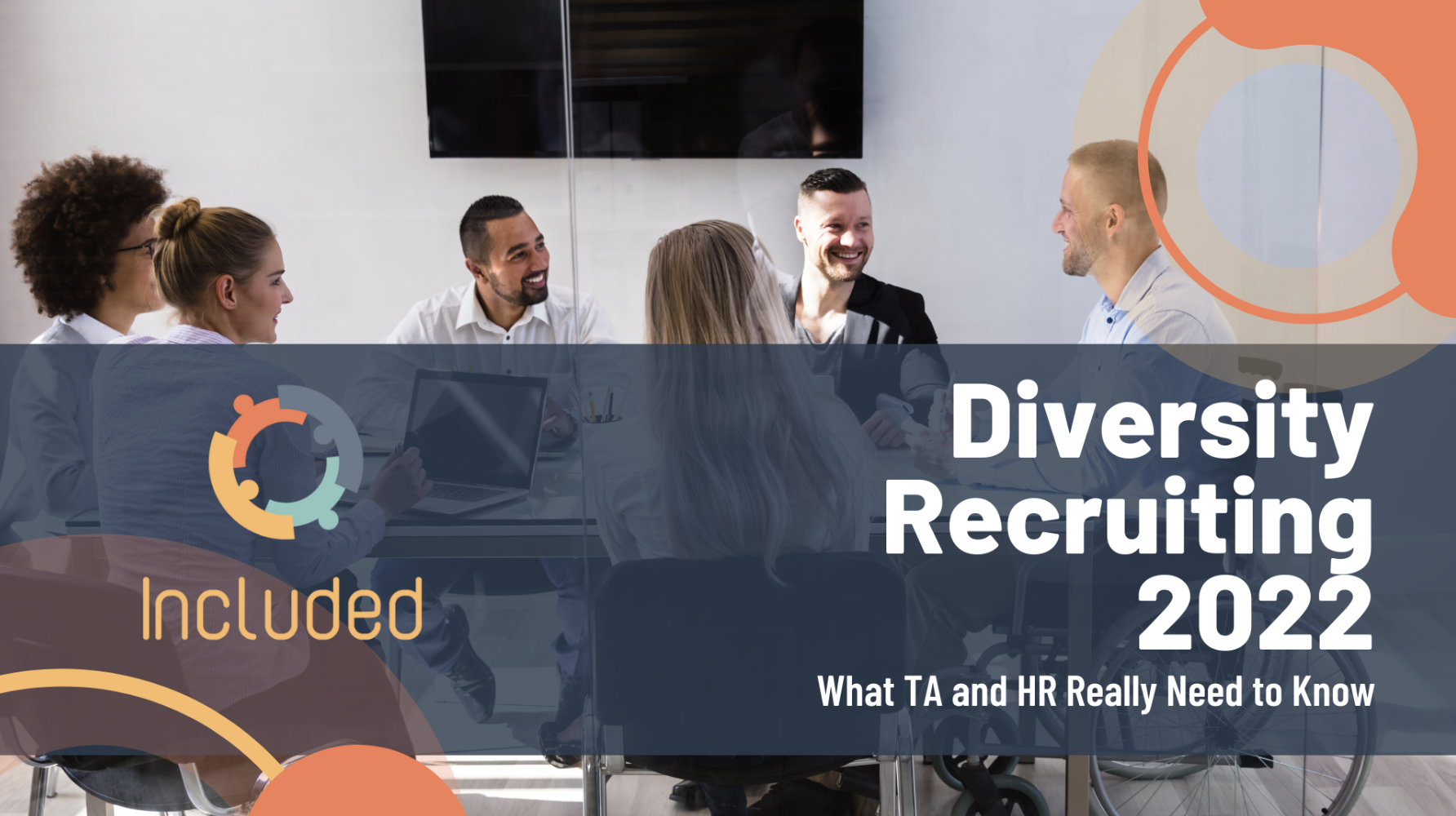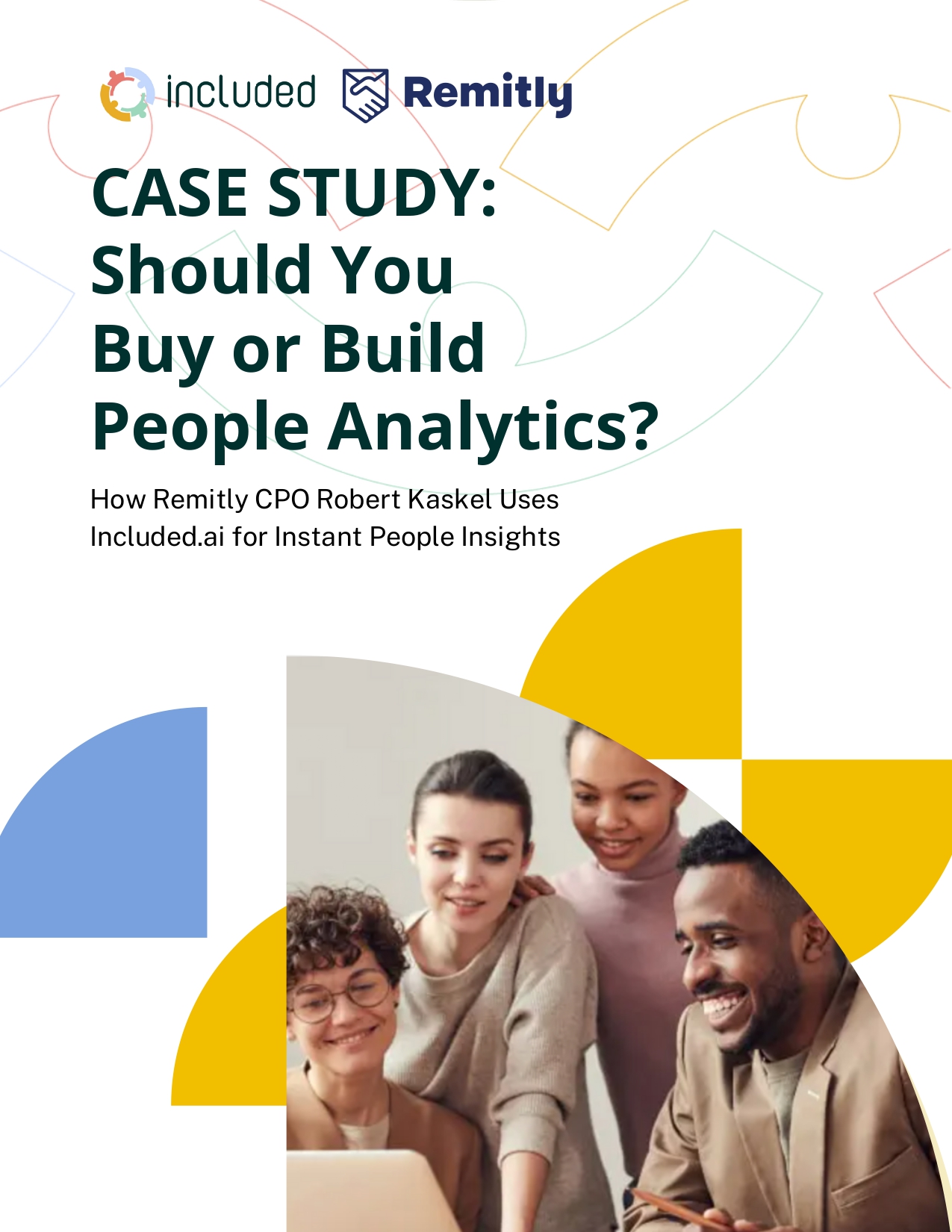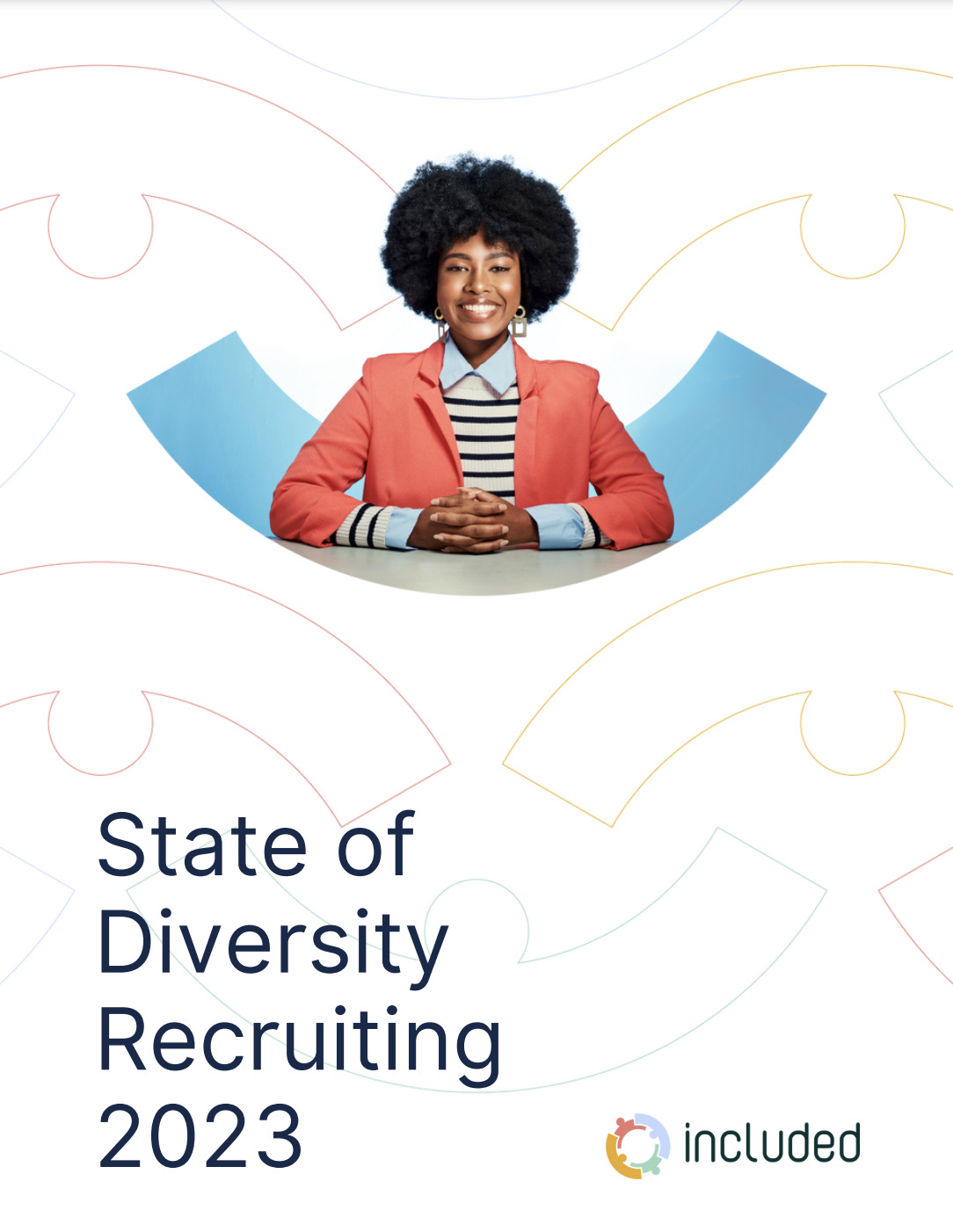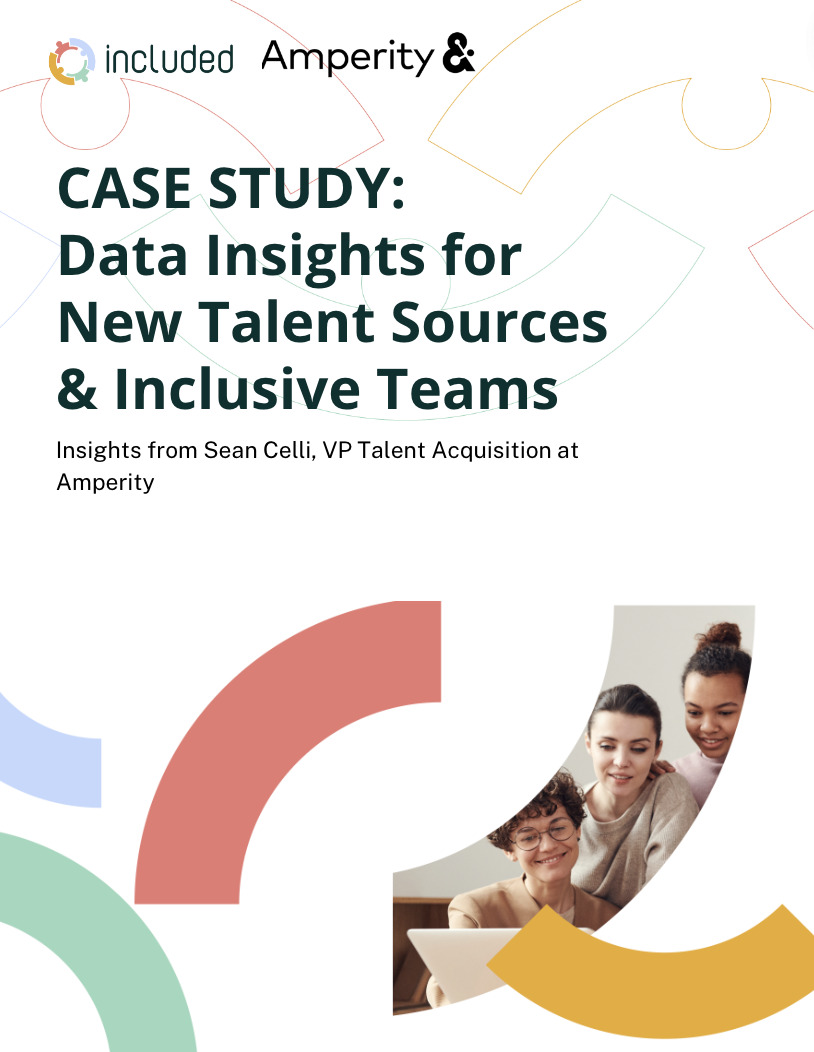Whether your company has switched to remote or hybrid or simply gained new momentum for DEI programs, chances are the way your company practices DEI has changed in the last couple years. Talent Acquisition and Human Resources teams find themselves with newly expanded considerations, excited to incorporate DEI into their processes.
The intersection of HR and DEI is an incredibly promising space, and in this moment of growth there is no shortage of inspiring developments. Between new equity requirements, increased public awareness, and advances in technology, there’s a ton of opportunities on the horizon for TA and HR professionals looking to recruit diversely. Team Included has taken a deep dive into the most up-to-date materials to get the scoop on what’s emerging in DEI – and what TA and HR professionals need to know today.
New Laws and Regulations Enacted Across the U.S.
Salary-range disclosure
After 25 years of activism, 2022 was the first year that Equal Pay Day was recognized nationally, with the Biden Administration calling on Congress “to pass the Paycheck Fairness Act, which would help mitigate sex-based pay discrimination while ensuring greater transparency and reporting of disparities in wages.”
While a federal bill rectifying the wage gap has yet to make it out of committee, state and local legislatures have passed a slew of bills in the last few years requiring employers to include the salary-range in job postings. These legal advancements are being hailed by job seekers and advocates alike as a crucial step towards pay equity. Tim Herrera of the New York Times advocates for sharing salary information, writing:
“There are direct, concrete consequences of falling victim to salary secrecy, including wage suppression and a lack of transparency around pay inequality, which disproportionately affects women and minorities.”
Salary-range disclosure has some TA and HR professionals breathing a sigh of relief. Unmatched salary expectations are one of the most common reasons for offer refusal, which can be a huge disappointment after weeks or months of screenings and interviews. A little information can circumvent a lot of wasted effort, for all parties involved. And while the changes may cause some friction, this is bound to make the job easier in the long run, and the equity advancement cannot be denied.
As with any major change, TA and HR folks may need to update some of their SOPs, even if they live outside the states requiring salary disclosure.
Here’s a few tips for adjusting to a salary-forward recruiting landscape:
- Know the laws in your state.
- Research the salary ranges for the role in your area, in the candidate’s locality, and the national average (keeping in mind that the national average might be lower than the location of the job or the candidate’s area of residence).
- The law requires that you disclose a range – keep it consistent. If the candidate challenges the range, have a solid standing for why the salary is what it is.
- *And* be ready to make adjustments if a dream candidate comes along that is outside of that range. If you come across a unicorn and you feel strongly about hiring them, consider moving the job up into a different title or salary band.
Board Diversity
To comply with state law passed in 2021, California-based publicly held companies are required to increase diversity through a phased-in requirement by 2023. While this isn’t, strictly-speaking, an HR issue, this is a fair sign of which way the winds blow. Also, as Bryce Covert wrote for Politico:
“In a world where many developed countries have neared gender parity in the boardroom, including France, Norway, and Sweden, the United States has remained stubbornly behind, with women holding only about a quarter of board seats. As a result, high-powered women miss out on the high compensation, experience and networks these boards provide.”
Combined with that the SEC approved new rules requiring most Nasdaq-listed companies to have at least two diverse directors, the trends seem to point to more pro-equity legislation, and this push for increased diversity will likely trickle down.
Recruiting Diverse Candidates Boosts Revenue and Innovation
Numerous studies have emerged in recent years illuminating the role of diversity in teams that deliver best-in-class results, creating innovative solutions and ideas at a significantly higher rate than homogenous teams.
Diversity pays off at every level of an organization, and intersectional diversity is crucial. Many of us think about diversity along lines of race and gender, but it’s becoming more apparent that cognitive diversity is beneficial to teams as well. On top of that, intersectionally diverse teams help each other think better:
“Part of the reason this happens is due to what scientists call cognitive elaboration—the process of sharing, challenging, and expanding our thinking. In essence, diverse teams compel each other to think more deeply about their reasoning and interrogate the facts more objectively. They share counterfactuals as they go, they don’t take things for granted, and there is minimal “social loafing”—of just accepting things at face value. In short, diverse teams tend to come to better conclusions because those conclusions have been road-tested more thoroughly.”
It’s no wonder Chief Diversity Officer is the fastest growing C-Suite role. Recruiting and retaining a racially, culturally, cognitively diverse workforce is a business imperative and any business that chooses to ignore that does so at their own peril.
DEI in 4D

Diversity is best enacted not just intersectionally but also multi-dimensionally. Too often there is a fair amount of diverse hiring in entry level and technical positions, but that same level of diversity doesn’t show up in management, much less in leadership. But those companies that hire and promote diversely reap huge benefits. As it turns out, teams led by people from diverse backgrounds outperform their counterparts at a significant rate.
According to BCG:
The biggest takeaway we found is a strong and statistically significant correlation between the diversity of management teams and overall innovation. Companies that reported above-average diversity on their management teams also reported innovation revenue that was 19 percentage points higher than that of companies with below-average leadership diversity—45% of total revenue versus just 26%.
The numbers make a strong case for investing in programs and tools that make it easier for organizations to hire, retain, and promote diversely. As Gartner reports:
Through 2022, 75% of organizations with frontline decision-making teams reflecting a diverse and inclusive culture will exceed their financial targets. And gender-diverse and inclusive teams outperformed gender-homogeneous, less inclusive teams by 50%, on average. It’s clear that the impact of diversity and inclusion is highly positive — a plus now that more organizations are extending their geographic reach when hiring IT talent.
Remote work fosters equity
Remote work, though it certainly presents new challenges, also opens up incredible vistas of opportunity in recruiting diversely. Many of our recruitment zones have expanded from “here” to “here, there, and everywhere.” You are no longer limited by your local demographic and can widen your talent pool by tapping into workforces beyond a limited geographic range.
When polled by Slack, a staggering 97% of Black knowledge workers said they want to stay remote or hybrid.
“During this time of remote work, Black people report significantly higher satisfaction with their jobs, including an increase in sense of belonging, a 64% improvement in ability to manage stress and 25% greater improvement in work-life balance.
Subramanian attributes this increase in satisfaction to the unique dynamic of remote work: There’s no need to code-switch when there is no in-person office. According to an article from Harvard Business Review, code-switching means “adjusting one’s style of speech, appearance, behavior, and expression in ways that will optimize the comfort of others in exchange for fair treatment, quality service, and employment opportunities.”
When the remote workforce exploded to 81% of US workers during the COVID pandemic, some aired concerns that productivity would drop, in spite of older studies suggesting remote work benefits both employers and employees. SAP Insights points out that those concerns were essentially unfounded:
“What that data told us was very much a reiteration of what it had been saying all along: when employees are given flexibility and independence, they rise to the challenge. McKinsey, in a mid-2020 survey, reports up to a 55% rise in employee experience factors, including achieving goals, recognition for work, engagement and relationship with their company, and job satisfaction.”
When surveyed, workers across all manner of demographics express strong support for continued access to remote work. Employers are called to adjust to this new reality. Remote work isn’t going away any time soon. In fact:
“There was an 83 percent increase in job posts mentioning flexibility in 2021 over 2019, according to LinkedIn, and 343 percent more mentions of flexibility in company posts during that time. For their part, recruiters need to know the ins and outs of their company’s flexible work policies and how the organization supports remote and hybrid workers.”
DEI and Employer Brand
In a candidate’s job market, employers need to pull every available lever to stay competitive.Your entire company culture is under scrutiny, and on sites like Glassdoor, you’re up for public review. Potential candidates want to know about compensation and benefits, same as always, but they’re increasingly invested in deeper facets of their future work environment. We see this demonstrated in that 76% of candidates polled report that diversity is an important factor when evaluating companies and job offers. DEI matters in recruiting, before you even begin the recruiting process!
Of course, the conversation will likely need to start at the top, with buy-in from key stakeholders, according to HRD Connect:
To bring diversity, equity and inclusion to the center of the employer branding strategy, we need clarity of purpose. For this, we need to engage the most senior leaders in the discussion.
Organizations need to have a clear vision from upper management of why we should develop and reinforce DE&I principles, and what we are aiming to achieve. Having established the reason, it is important to convey this message not only to employees but also to customers and shareholders.
An element worth considering is how HR, through the recruiting process, comes into contact with many applicants that will form an opinion of your company in that process, that they will then carry out to their networks. This begs the following questions:
- How does your company communicate their DEI story throughout the recruiting process?:
- Do you request demographic disclosure? How many aspects of identity are you tracking?
- If so, at how many points in the hiring funnel? Multiple requests increase probability of disclosure, as well as trust
- Does your website include photos of employees from a multitude of backgrounds? As Marian Wright Edelman said, “you can’t be what you can’t see.” Seeing people that look like themselves already a part of your workforce will improve a candidate’s ability to imagine themself there.
- Adding to that, does your website showcase stories from the perspectives of employees from historically marginalized communities?
When incorporating DEI into your employer brand, consider how your commitment to equity shows up across every aspect of the candidate and employee experience. from interviewing to offboarding. Throughout the candidate journey, leverage opportunities for the candidate/employee to be an active participant in co-creating your company’s DEI story.
Best Practices in DEI Recruiting for 2022
In today’s hyper-competitive recruiting environment, reactivity no longer suffices. Recruiters are being called upon to apply the same level of care and “customer obsession” that sales and marketing leaders have long crowed about. The candidate experience is the focal point of the conversation around recruiting in 2022, and this goes double for recruiting diversely. Thankfully, new technologies and cutting edge tools are hitting the market to help HR and TA execute candidate obsession with meticulous, data-driven efficacy. Here are the 4 best practices on our minds for 2022, and the tools to support them.
1) Make a statement
If your company doesn’t have a DEI statement in place, it’s time to write one. Without a clear, cohesive declaration of commitment it’s an uphill climb to get everyone on board and rowing in the same direction. Study examples for inspiration and get buy in from leadership.
2) Inclusive postings
Studies have shown that women are less likely to apply for a job if they don’t have experience that lines up exactly with the posting. Instead of writing a job description with a long list of required experience, focus on job training and transferable skills. You can use artificial intelligence (AI) tools like Textio to audit your posting for gendered and otherwise biased language.
3) Ask for demographic data early and often
You can’t improve what you don’t measure. Check your ATS to make sure you are leveraging every point at which you could be asking for rich demographic data. Not only does this give you a more complete data set to work with, it also communicates to candidates that diversity is important to your organization.
4) Audit your hiring funnel for equity gaps
The more diverse applicants at the top of your hiring funnel, the better positioned you are to hire qualified diverse candidates. Which of your sources are delivering the most diverse candidate slates? Included can show you the performance rates of all your sources so you can more effectively allocate ad spend with total confidence.
At what rate and speed are candidates moving through the hiring process? For example, do Black women applying for engineering roles have a comparable pass-through rate to white women? Included instantly illuminates hiring funnel equity gaps, broken out by race, gender, department, and much more. (SANKEY GRAPHIC)
2022 and beyond
Never before have HR and TA professionals had more tools or support available for diversity recruiting. Use the steps above to evaluate your current hiring practices and refine them to attract more outstanding candidates. Employ AI-based tools to standardize interview questions and remove gender-specific terminology from your job descriptions, and to track and improve diversity in your hiring funnel. Broaden your reach by embracing remote work.
At its core, HR is about bringing people together to build the most successful companies we can. Recruiting diversely is just one aspect of that, one that is crucial to creating innovative, competitive businesses. The future is inclusive.












